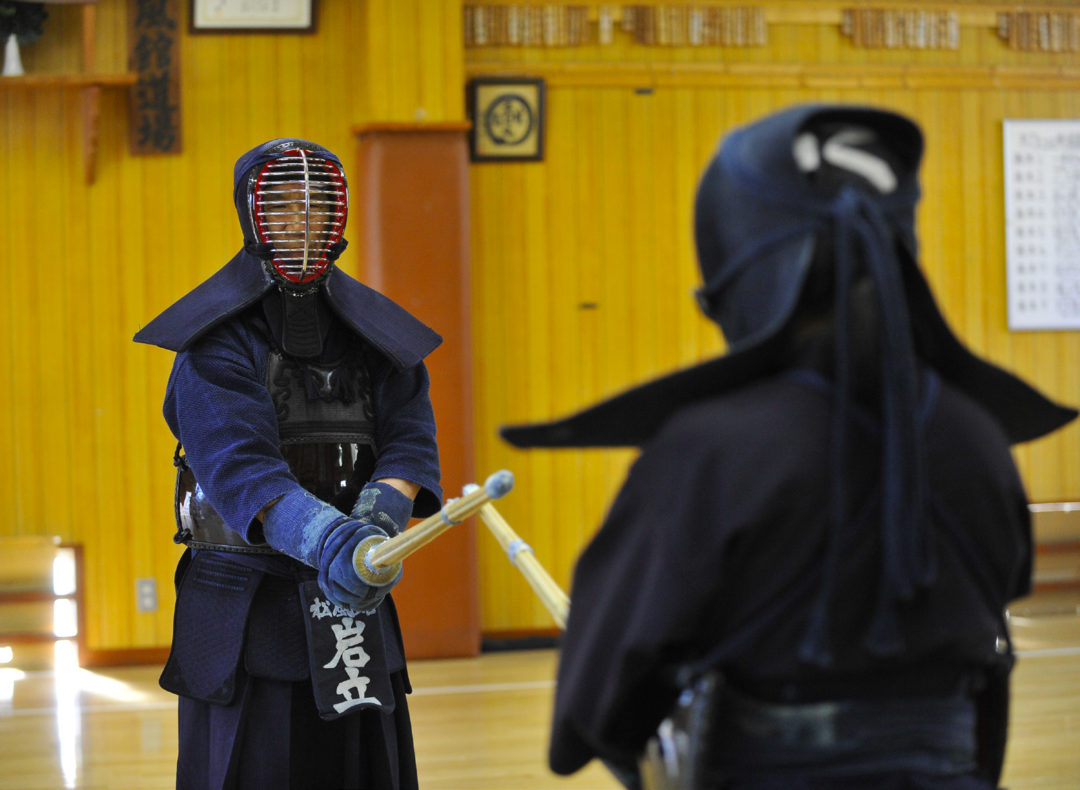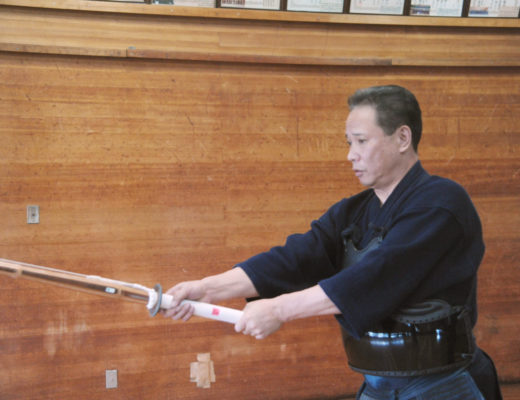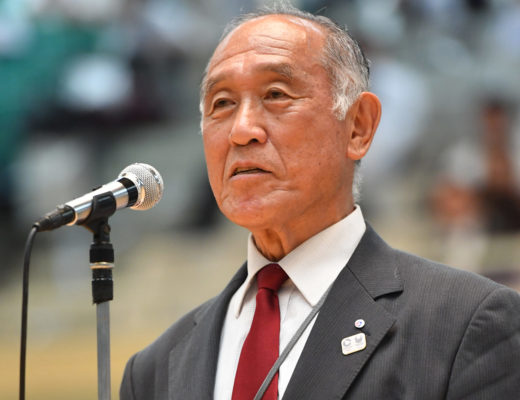Tame is to sense striking opportunity
The importance of tame that leads to aggressive seme
Profile
Iwatate Saburo 8th dan Hanshi
Born in 1939 in Chiba Prefecture. After graduating from Chiba Prefecture Narita High School, he got a job at Chiba Prefecture Police. After retiring from the Tokuren, Iwatate sensei served as a Kanto District Police School Instructor and Chiba Prefectural Police kendo head teacher. Starting in 1978, Iwatate began teaching at the Shofukan dojo and a number of swordsmen from Japan as well as overseas have gathered to ask for the guidance of Iwatate Saburo.
Currently, he is director of Shofukan dojo, Shobi Gakuen University kendo head teacher, the All-Japan Kendo Federation councilor, All Japan Kendo Federation vice-president, and the All Japan Senior-Kenyukai chairman.
Take kamae with strength from your lower abdomen
A flexible kamae for tame
As is well known, in kendo there is a high emphasis on “tame”. It is difficult to give a short explanation of tame. In the Japanese-English kendo dictionary it says: “The condition of being composed both mentally and physically, and maintaining a spiritually replete state despite the tense situation when responding to the opponent’s attack or producing a waza.”
If you can create this state, you can observe your opponent well. In particular, if you aim for 6th, 7th, or even 8th dan, you will not be evaluated positively unless you use the process of applying seme and disturbing your opponent before performing a technique. In order to perform such a technique, you must read the opponent’s intention.
The rest of this article is only available for Kendo Jidai International subscribers!





